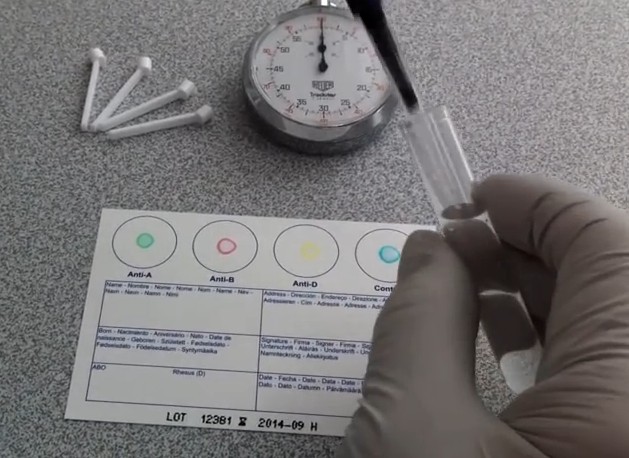Knowing one’s blood group has become essential for not only medical or biological reasons but also to get a visa or to apply for certain jobs. Unfortunately this is one of the most ignored parts of the human body and people usually assume their blood types by referring to their parent’s but it’s definitely not the perfect way to do so and to be absolutely sure one must take a blood type test.
Consult a primary healthcare physician
There are several ways to know the blood group such as laboratory facilitated tests. One can also consult a primary healthcare physician to know about the blood type. If there is a family physician then there are chances of the record being there already if one has had blood tested or drawn from there. In case it’s not there then it is better to take the test and record it for future use. Knowing blood group also becomes necessary in case of accidents or injuries or donating blood.
Blood type testing kit
Nowadays with the advancement of technology and access to more medical equipments it is easier to have blood tests, blood pressure tests and sugar tests at home and for free with just one time investment. Mostly the results are accurate and such devices can also be bought online. However it is always better to consult an expert before buying such products. In this way there isn’t a need to depend on someone to determine one’s own blood type.
The kits mostly contain a finger prick as well as a testing card on which a drop of blood has to be dispensed at every field. They also have a lancet, otherwise it’s always advisable to use a sterilized needle to prick the finger. The fields of the testing card have antibodies that lead to a reaction with the antigens on the red blood cells. It is also recommended to use a fresh toothpick for every field in order to mix the blood with the impregnation and create a small smear. The results could be as follows:
- If the blood group is A there will be clumping in the field anti-A
- In case of blood group B there will be clumping in the field anti-B
- In case of blood group AB, clumping will be shown in the field anti-B
- If the blood group is O, there will be no clumping.
Donating blood
Not commonly practiced but this is also a convenient way to determine the blood type by helping others who need it. In fact most of the people when donate blood for the first time are unaware of their own blood group as has been found. There are local blood donation centers in most of the cities and usually the schools, colleges, Churches and communities host blood donation camps or drives. However this might take a while and the blood type would not be told right away as it has to be processed. There are blood service centers as well in most of the countries and they generally provide people with free resources to determine their blood type and for blood tests otherwise as well.
Blood Type Test
Blood type tests are one of the most common ways to test the blood category and done usually prior to a blood transfusion. It is also commonly conducted to test the blood category of pregnant women. The markers are called antigens and found on the red blood cells. It is also done to check blood relations. The blood group antigens ABO and the Rh are the most important ones and could either be positive, or absent negative.
In United States around 40% people have type A blood, 8% have A-negative (A-) blood and 38% have A-positive (A+) blood. Having B antigen means having type B blood and the plasma’s antibodies attack type A blood. Almost one third of the Americans have type B blood and just 2% have B negative with 8% having B-positive (B+) blood. However if the antigen none of these, then the blood type is O and plasma’s antibodies attack type A and type B blood. Almost 42% of people in the United States have type O blood, with 9% having O-negative (O-) blood and 36% having O-positive (O+) blood. About 5% of Americans have type AB blood, with only 1% having AB-negative and 3% with AB-positive (AB+) blood.
It is very important for the blood received through the process of transfusion to have the same antigens that are compatible to the blood type. If it doesn’t happen then the antibodies present in the plasma will kill the donor’s blood cell which is also called a transfusion reaction, and should be taken seriously as it takes place immediately. However the reaction can be severe, mild or can also be fatal.


